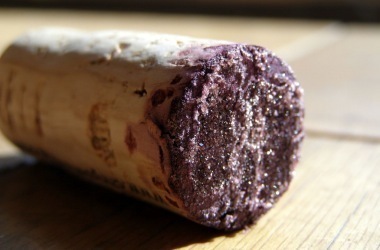
Cork taint is a wine fault that is characterized by a set of undesirable smells or tastes found in a bottle of wine, especially spoilage that can only be detected after bottling, aging and opening. The most common cause of cork taint is the presence of the chemical compound 2,4,6-trichloroanisole (TCA) in the wine, which can originate from the cork stopper or from other sources of contamination
TCA is formed when some fungi, mold or bacteria come into contact with chlorophenol compounds, which are a type of antimicrobial agent used in the processing of wood or cork. Chlorophenols can also be a product of the chlorine bleaching process used to sterilize corks. TCA can affect wines irrespective of price and quality level.
Corked wine containing TCA has a characteristic odor, variously described as resembling a moldy newspaper, wet dog, damp cloth, or damp basement. It can also reduce or mute the wine’s native aromas and flavors, making it dull and uninteresting. Cork taint can affect both red and white wines, but it is more noticeable in white wines because they have less pigment and tannin to mask the off-odors.
The human threshold for detecting TCA is very low, measured in the single-digit parts per trillion. However, this can vary depending on an individual’s sensitivity and the olfactory system’s habituation to TCA . Some people may not notice cork taint at all, while others may find it very unpleasant.
To prevent cork taint and other negative effects of sun exposure, winemakers and consumers should take some precautions. For example, winemakers can choose cork suppliers that use quality control methods to detect and eliminate TCA-contaminated corks. They can also use alternative closures such as screwcaps or synthetic corks that are less prone to TCA contamination. Consumers should store their wines in cool, dark places away from direct sunlight or fluorescent lights. They should also avoid buying wines that are displayed near windows or under non-LED lights.
If you suspect that your wine is corked, you can try to confirm it by smelling the cork itself. If it smells musty or moldy, chances are your wine is tainted. You can also compare your wine with another bottle of the same wine to see if there is a difference in aroma and flavor. If you are sure that your wine is corked, you can return it to the retailer or producer for a replacement or refund.
